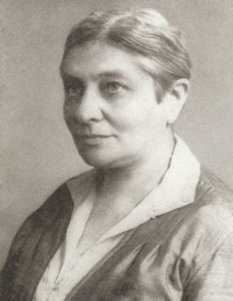Margarete Bieber facts for kids
Quick facts for kids
Margarete Bieber
|
|
|---|---|
 |
|
| Born | 31 July 1879 Schönau, Landkreis Schwetz, West Prussia, German Empire
|
| Died | 25 February 1978 (aged 98) |
| Nationality | German Empire, United States |
| Alma mater | University of Berlin, University of Bonn |
| Occupation | Art historian, professor |
Margarete Bieber (born July 31, 1879 – died February 25, 1978) was a famous German-American art historian and archaeologist. She was also a university professor. In 1919, she became only the second woman to be a university professor in Germany. She taught at the University of Giessen.
Margarete Bieber studied many things about ancient Greece and Rome. This included their plays, sculptures, and even their clothing. She had to leave Germany when the Nazis came to power. She moved to the United States and taught at places like Barnard College, Columbia University, and Princeton University. She wrote many important books about ancient art, especially about Greek and Roman theater, ancient sculptures, and how Romans copied Greek art. She showed that Roman copies were unique in their own way, not just simple copies.
Contents
Margarete Bieber's Life
Early Life and School
Margarete Bieber was born on July 31, 1879. Her hometown, Schönau, is now called Przechowo and is in Poland. Her parents, Valli Bukofzer and Jacob Heinrich Bieber, were Jewish. Her father owned a factory.
Margarete went to a girls' school for six years. Then, she went to a special finishing school in Dresden. In 1899, she moved to Berlin. She attended a private school there that helped women prepare for university. In 1901, she passed her exams and wanted to go to the University of Berlin. At that time, women were not allowed to officially enroll in universities. However, Margarete found a way to attend lectures and learn from important professors.
In 1904, she moved to Bonn. She continued her studies there and earned her PhD from the University of Bonn in 1907. Her main research for her PhD was about how ancient Greek clothing was shown in art.
Research and Becoming a Professor
After finishing her studies, Margarete Bieber traveled a lot to do research. She visited many places around the Mediterranean Sea. In 1909, she became the first woman to receive a special travel grant from the German Archaeological Institute (DAI). This allowed her to do research in Athens and Rome until 1914. She became a member of the DAI in 1913.
When World War I started, Margarete returned to Germany. She worked as a Red Cross helper. From 1915, she taught classes at the University of Berlin. She filled in for her old teacher, Georg Loeschcke, who was sick. After he passed away, she was not allowed to continue teaching. This was because women could not yet become full professors in Germany. So, Margarete taught private lessons from her home.
After trying many times, she finally became an associate professor in classical archaeology in 1919. This was at the University of Giessen. She was the second woman ever to become a university professor in Germany. By 1928, she was in charge of the Giessen Institute of Archaeology. In 1931, she became a full professor. Her future seemed bright, and in 1932, she adopted a six-year-old girl named Ingeborg.
However, things changed when the Nazis took power in Germany. They removed Jewish people from their jobs, including university professors. In July 1933, Margarete Bieber lost her professorship. She, Ingeborg, and their governess left Germany and went to England. There, Margarete became an honorary fellow at Somerville College, Oxford.
Moving to America
In 1934, Margarete Bieber moved to the United States. She was invited to teach at Barnard College. Later, she became a visiting professor at Columbia University in 1936. She applied to become an American citizen in 1939.
In 1939, she published a very important book called The History of the Greek and Roman Theater. This book became a key text for anyone studying ancient Greek and Roman plays. It explained how plays were produced and staged.
During World War II, Margarete helped German people who had to leave their homes. She retired from Columbia University in 1948. But she still continued to give lectures at Columbia and at Princeton University. In 1955, she published another major book, The Sculpture of the Hellenistic Age. She kept writing about sculptures in American museums and about ancient clothing.
Margarete Bieber received many honors for her work. In 1971, she was chosen as a Fellow of the American Academy of Arts and Sciences. In 1974, the Archaeological Institute of America gave her their highest award, the Gold Medal for Distinguished Archaeological Achievement. She remained active even in her later years, living with her adopted daughter, Ingeborg Sachs. Her last book, Ancient Copies, came out in 1977. It talked about how Roman copies of Greek art were changed and reflected Roman culture. Margarete Bieber passed away on February 25, 1978, in New Canaan, Connecticut. She was 98 years old.
See also
 In Spanish: Margarete Bieber para niños
In Spanish: Margarete Bieber para niños

